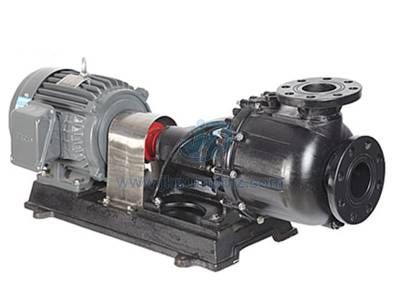Self Priming Pump - Working, Utilizes and Advantages
A Self-Priming Pump is a pump which will remove its passages of air if it ends up being air bound and return to delivery of the pumpage without outdoors focus. To complete this, a charge of fluid enough to prime the pump need to be kept in the covering or in an accessory priming chamber.

Self-Priming Pump
Functioning of Self Priming Pumps
During the priming cycle, air gets in the pump and also mixes with water at the impeller. Water as well as air are released with each other by centrifugal activity of the impeller right into the water storage tank. The air naturally tends to increase, while the water tends to sink.
Air-free water, now larger than air-laden water, streams by gravity back down right into the impeller chamber, prepared to blend with even more air being available in the suction line. When all air has been evacuated and also a vacuum cleaner developed in the suction line, air pressure forces water up right into the suction line in the direction of the impeller, as well as pumping begins.
Air-free water, currently much heavier than air-laden water, moves by gravity back down into the impeller chamber, prepared to combine with more air being available in the suction line. When all air has been left and a vacuum produced in the suction line, air pressure forces water up into the suction line in the direction of the impeller, and pumping begins.
Recirculation of water within the pump stops when pumping begins. The following time the pump is started, it will "self-prime"-- that is, it will have the ability to once again blend the water as well as air in the event to create a pumpable fluid till the pump is fully topped again.
This type of pump varies from a standard Centrifugal Pump in that it has a water storage tank built right into the unit which enables it to rid pump and suction line of air by recirculating water within the pump on priming cycle. This water reservoir might be above the impeller or in front of the impeller. In either instance, the "self-priming" ability of the pump comes from the pump's ability to keep water after the really initial prime.
Use Self Priming Pumps
Self-primers are commonly used in sewer lift terminals, where raw sewage is pumped right into a treatment facility. They are likewise typically installed on portable skids and made use of to pump stormwater and also for dewatering of building and mining procedures. When used to dewater building and construction sites, self-priming pumps are typically described as garbage pumps-- a reference to the reality that they are capable of pumping the debris that is normally located at construction sites.
Advantages of Self Priming Pumps
Solids taking care of is among its essential benefits, as some self-priming pumps can deal with solids as much as 3 inches. One more benefit, when compared to a completely submersible pump, is its capacity to continue pumping fluid while pump is still located out of the pit.
Disadvantages of Self Priming Pumps
The downside is its ineffectiveness, as clearances commonly need to be larger to allow for much better solids dealing with, additionally a bigger volute to assist with self priming.
The company also provides Magnetic Drive Pumps, if necessary, please feel free to contact us









